Handheld Laser Source
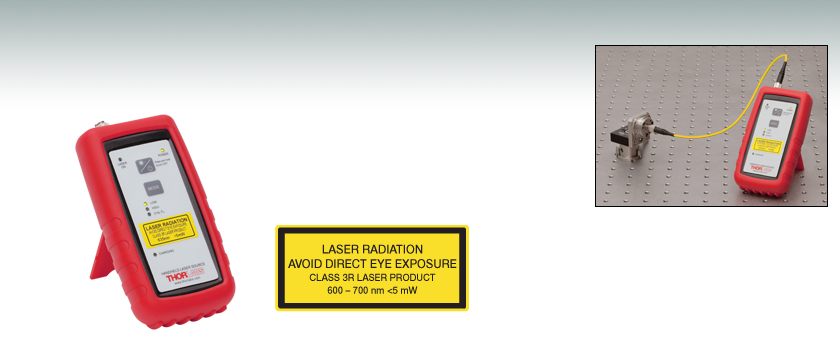
- 635 nm Typical Center Wavelength
- Ideal as a Portable Alignment Laser
- 3 Selectable Power Levels
- Internal NiMH Rechargeable Battery
HLS635
Handheld Laser Source
with Fiber and FiberPort

Please Wait
Features
- Output Wavelength: 635 nm (Typical)
- FC/PC Fiber Connector
- Selectable Low (~1 mW), High (≥2.5 mW), and Pulse (≥2.5 mW at 2 Hz, 50% Duty Cycle) Output Power Levels
- Universal Power Supply Included
- Red Rubber Cover Boot with Kickstand
- Compact Design for Easy Handling: 5.33" x 2.74" x 0.94"
This compact, handheld fiber-coupled laser source is intended to be used as a portable alignment laser. The laser output of the HLS635 may be set in 3 modes: low power (~1 mW), high power (≥2.5 mW), and a pulse mode that switches the laser from high power to off at 2 Hz. The selected mode is indicated by indicator lights on the front panel of the HLS635. The output is FC/PC coupled using the standard SM600 single mode fiber pigtail, which provides true single mode output at 635 nm. The unit includes an internal 3.6 V NiMH rechargeable battery and charger. A removable red rubber cover boot with a kickstand is also included.
The universal DC power supply will work with line voltages between 100 and 240 VAC from 50 to 60 Hz. To charge this device, the HLS635 must not be lasing and be within the battery charge temperature range (see the Specs tab). Additionally, Thorlabs also offers other Fiber-Coupled Laser Sources.
Note: The laser must be off when connecting or disconnecting fibers from the device.
| Specifications | |
|---|---|
| HLS635 | |
| Center Wavelength (Min / Typical / Max) |
625 nm / 635 nm / 640 nm |
| Operating Mode | Low, High, Pulse |
| CW Output Power (High/Low) | >2.5 mW/1 mW |
| Pulsed Output Power (High/Low) | >2.5 mW/~0 mW |
| Pulse Frequency | 2 Hz, 50% Duty Cycle |
| Laser Class | 3R |
| Output Fiber | SM600 |
| Fiber Connector | FC/PC |
| DC Input Voltage | 9 VDC, 2 A (9.2 VDC Max) |
| Battery Type | NiMH, 3.6 V |
| Battery Life | 12 Hours Max (In High Power Mode) ~45 Days (On Standby) |
| Battery Temperature Limits | -20 to 60 °C |
| Maximum Charge Time | ~100 Minutes |
| Battery Charge Temperature Range | 10 to 38 °C |
| Dimensions | 5.33" x 2.74" x 0.94" (135.4 mm x 69.6 mm x 24 mm) |
| HLS635 Power Supply | |
| AC Adapter Input | 100 - 240 VAC, 0.48 A, 50 - 60 Hz |
| Max Power | 18 W |
| Output Voltage | 9 VDC, 2.2 A |
Laser Safety and Classification
Safe practices and proper usage of safety equipment should be taken into consideration when operating lasers. The eye is susceptible to injury, even from very low levels of laser light. Thorlabs offers a range of laser safety accessories that can be used to reduce the risk of accidents or injuries. Laser emission in the visible and near infrared spectral ranges has the greatest potential for retinal injury, as the cornea and lens are transparent to those wavelengths, and the lens can focus the laser energy onto the retina.
Safe Practices and Light Safety Accessories
- Laser safety eyewear must be worn whenever working with Class 3 or 4 lasers.
- Regardless of laser class, Thorlabs recommends the use of laser safety eyewear whenever working with laser beams with non-negligible powers, since metallic tools such as screwdrivers can accidentally redirect a beam.
- Laser goggles designed for specific wavelengths should be clearly available near laser setups to protect the wearer from unintentional laser reflections.
- Goggles are marked with the wavelength range over which protection is afforded and the minimum optical density within that range.
- Laser Safety Curtains and Laser Safety Fabric shield other parts of the lab from high energy lasers.
- Blackout Materials can prevent direct or reflected light from leaving the experimental setup area.
- Thorlabs' Enclosure Systems can be used to contain optical setups to isolate or minimize laser hazards.
- A fiber-pigtailed laser should always be turned off before connecting it to or disconnecting it from another fiber, especially when the laser is at power levels above 10 mW.
- All beams should be terminated at the edge of the table, and laboratory doors should be closed whenever a laser is in use.
- Do not place laser beams at eye level.
- Carry out experiments on an optical table such that all laser beams travel horizontally.
- Remove unnecessary reflective items such as reflective jewelry (e.g., rings, watches, etc.) while working near the beam path.
- Be aware that lenses and other optical devices may reflect a portion of the incident beam from the front or rear surface.
- Operate a laser at the minimum power necessary for any operation.
- If possible, reduce the output power of a laser during alignment procedures.
- Use beam shutters and filters to reduce the beam power.
- Post appropriate warning signs or labels near laser setups or rooms.
- Use a laser sign with a lightbox if operating Class 3R or 4 lasers (i.e., lasers requiring the use of a safety interlock).
- Do not use Laser Viewing Cards in place of a proper Beam Trap.
Laser Classification
Lasers are categorized into different classes according to their ability to cause eye and other damage. The International Electrotechnical Commission (IEC) is a global organization that prepares and publishes international standards for all electrical, electronic, and related technologies. The IEC document 60825-1 outlines the safety of laser products. A description of each class of laser is given below:
| Class | Description | Warning Label |
|---|---|---|
| 1 | This class of laser is safe under all conditions of normal use, including use with optical instruments for intrabeam viewing. Lasers in this class do not emit radiation at levels that may cause injury during normal operation, and therefore the maximum permissible exposure (MPE) cannot be exceeded. Class 1 lasers can also include enclosed, high-power lasers where exposure to the radiation is not possible without opening or shutting down the laser. |  |
| 1M | Class 1M lasers are safe except when used in conjunction with optical components such as telescopes and microscopes. Lasers belonging to this class emit large-diameter or divergent beams, and the MPE cannot normally be exceeded unless focusing or imaging optics are used to narrow the beam. However, if the beam is refocused, the hazard may be increased and the class may be changed accordingly. |  |
| 2 | Class 2 lasers, which are limited to 1 mW of visible continuous-wave radiation, are safe because the blink reflex will limit the exposure in the eye to 0.25 seconds. This category only applies to visible radiation (400 - 700 nm). |  |
| 2M | Because of the blink reflex, this class of laser is classified as safe as long as the beam is not viewed through optical instruments. This laser class also applies to larger-diameter or diverging laser beams. |  |
| 3R | Class 3R lasers produce visible and invisible light that is hazardous under direct and specular-reflection viewing conditions. Eye injuries may occur if you directly view the beam, especially when using optical instruments. Lasers in this class are considered safe as long as they are handled with restricted beam viewing. The MPE can be exceeded with this class of laser; however, this presents a low risk level to injury. Visible, continuous-wave lasers in this class are limited to 5 mW of output power. |  |
| 3B | Class 3B lasers are hazardous to the eye if exposed directly. Diffuse reflections are usually not harmful, but may be when using higher-power Class 3B lasers. Safe handling of devices in this class includes wearing protective eyewear where direct viewing of the laser beam may occur. Lasers of this class must be equipped with a key switch and a safety interlock; moreover, laser safety signs should be used, such that the laser cannot be used without the safety light turning on. Laser products with power output near the upper range of Class 3B may also cause skin burns. |  |
| 4 | This class of laser may cause damage to the skin, and also to the eye, even from the viewing of diffuse reflections. These hazards may also apply to indirect or non-specular reflections of the beam, even from apparently matte surfaces. Great care must be taken when handling these lasers. They also represent a fire risk, because they may ignite combustible material. Class 4 lasers must be equipped with a key switch and a safety interlock. |  |
| All class 2 lasers (and higher) must display, in addition to the corresponding sign above, this triangular warning sign. |  |
|
| Posted Comments: | |
Dodd Gray
(posted 2024-02-15 14:23:57.947) It would be very useful if versions of this product were offered near a variety of standard wavelengths like 1550, 1310, 1064, 532, 405nm as well as 635nm. jdelia
(posted 2024-02-16 09:18:56.0) Thank you for contacting Thorlabs and for leaving this valuable feedback. I have forwarded your request to our design engineers via our internal suggestion forum for consideration for a future product line. user
(posted 2023-08-25 17:59:27.92) Is this device susceptible to back reflections? I want to use it in a system where there could be significant return signal down the fiber. Is an isolator required? ksosnowski
(posted 2023-08-29 05:38:18.0) Thanks for reaching out to Thorlabs. The HLS635 uses a fiber-coupled Fabry-Perot laser diode which does not have any built-in isolator. The stability and health of the diode can be effected if backreflections are present. If significant return power is expected then it is recommended to use some isolation optics to avoid damaging the HLS635's pigtail emitter. If for some reason your HLS635 laser does become damaged, we are able to replace the laser pigtail inside. I have reached out directly to discuss your application in further detail. Vitalie Nedelea
(posted 2023-08-14 08:03:22.263) Dear Thorlabs Team.
I have a problem with a new HLS635 SN: TP03088914-28526.
After it was charged, I switch it on. After that I can not change the laser mode, by pressing Mode button - no reaction at all. When I push the Laser/On button for lasing - it just switches off.
Please help me to solve this problem!
Regards. ksosnowski
(posted 2023-08-14 05:10:15.0) Hello Vitalie, thanks for reaching out to Thorlabs. While it is normal for the power button to be held down a few seconds before startup, the mode should switch with a single brief press of the button. This does sound like an issue with your HLS635 and I have reached out directly to discuss an RMA. We recommend contacting techsupport@thorlabs.com directly if you experience this sort of issue with the device. dima vais
(posted 2022-12-12 17:49:11.87) does this product requires regular yearly calibrations? cdolbashian
(posted 2022-12-15 01:44:27.0) Thank you for reaching out to us. While these do not require a yearly calibration, you may find the power attenuates over time due to damage at the fiber bulkhead or reduced output of the internal diode. If this happens, we are happy to repair it for you. Please feel free to contact RMA@thorlabs.com or Techsupport@thorlabs.com to facilitate such a repair. Hung Nguyen
(posted 2022-09-27 16:39:49.467) Can you confirm this laser product complies with AS/NZS IEC 60825.1? cdolbashian
(posted 2022-10-14 03:52:09.0) Thank you for reaching out to us with this inquiry. I have contacted you directly with the appropriate documentation. Santhosh Surendra
(posted 2022-03-22 09:06:10.43) Hello!
I work with a Yb ion experiment, and we have various other experiments in the group where we work with lasers from 350nm to 2000nm.
It would be super nice for us if you can make a hand held laser source for alignment purposes at other wavelengths in blue and green, so its easier to do fiber alignment with other optical fibres like SM350. ksosnowski
(posted 2022-03-29 06:39:40.0) Thanks for reaching out to us Santosh. Currently our closest option to this would be achieved by mounting one of our CPS series lasers into a lens tube, and directing this into a collimated fiber optic. I have reached out directly to discuss your application further. Bruno Paradis
(posted 2022-02-22 10:34:31.42) Is it possible to have it at 1064nm ? jdelia
(posted 2022-02-23 12:45:18.0) Thank you for contacting Thorlabs. Unfortunately, we cannot offer this laser at 1064 nm at this time. However, I can certainly pass along your feedback to our internal suggestion forum. I have also contacted you directly regarding potential alternative catalog options. David Salazar
(posted 2021-07-01 14:37:11.45) It would be awesome if you could provide this with an FC-APC connection YLohia
(posted 2021-07-02 09:44:17.0) Thank you for your feedback! We will consider offering an FC/APC version of this in the future. hines
(posted 2019-01-07 16:24:20.553) Putting in a request for a 780 nm handheld laser source. mmcclure
(posted 2019-01-08 09:31:13.0) Hello, thank you for contacting us. I have recorded your suggestion in our internal engineering forum for further consideration. ptswap13
(posted 2018-08-22 23:47:32.46) Hello,
I have a question about the fiber coupling with this product. I'm currently using the optical fiber (P2-630A-PCSMA-1) with FC/PC and SMA connector.
I've checked the output power (~2 mW) similar with that in specs before connection, but after connection, the power reduced to 0.1% (~3 uW). The fiber has no problem (except for contamination), and we got the same power with other optical fibers suitable for this product.
Will there any problem with the connector in laser? Or is this product inherently made with this performance? YLohia
(posted 2018-09-17 10:29:25.0) Hello, thank you for contacting Thorlabs. Please inspect the front face of the fibers on both ends under a fiberscope. Which side of the fibers are you plugging into the HLS635? Note that this only accepts FC/PC connectors, not SMA connectors so one side of your fiber will not work. Are you measuring the power outputs with and without the fiber under the same conditions with the same detector? I have reached out to you directly to troubleshoot further. mark.farley
(posted 2015-06-04 17:00:12.0) Hello,
We have everal of the HLS635 Handheld Laser Sources and we would like to purchase several more but with ST connector type. Can you make a special-order ST connector version?
Thank you. besembeson
(posted 2015-08-28 05:02:18.0) Response from Bweh at Thorlabs USA: I will followup with you by email regarding this special. A quick alternative is to use a hybrid fiber cable, ST at one end and FC/PC at the other end. twichell
(posted 2015-05-19 13:31:46.497) re HLS635: A 1064 version is today's wish, last week it was 976, and a year ago it was 1550. an 850 VCSEL would also be useful for communications testing. Keeping it class 3 is critical. Just a small simple source for testing, alignment etc. besembeson
(posted 2015-08-19 05:04:03.0) Response from Bweh at Thorlabs USA: Thanks for the feedback. We will consider this suggestion when we look into expanding our handheld laser sources. thiel
(posted 2013-11-05 17:02:51.837) Is it possible to switch the laser on and of with a power supply insted of the battery?
We like to change it. tcohen
(posted 2013-11-14 04:09:08.0) Response from Tim at Thorlabs: It would not be easy for the end user to make this modification but we may be able to quote this as a special. I'll contact you to keep you updated. bdada
(posted 2012-06-08 12:55:00.0) Response from Buki at Thorlabs to edouard.schmidtlin:
Thank you for participating in our feedback forum. The HLS635 laser source was recently released and we really appreciate your interest. I have shared your feedback with our production team for consideration as we continue to expand this product line. edouard.schmidtlin
(posted 2012-06-07 12:05:47.0) Could you propose such pigtailed laser source for major wavelenghts (850, 1310, 633, 532 etc)? |
 Products Home
Products Home










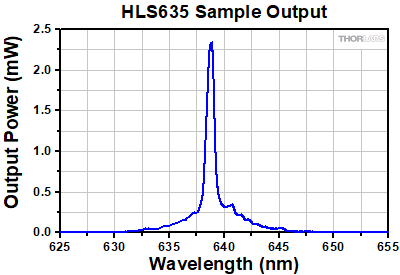
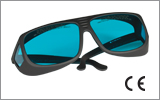
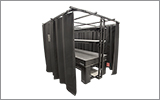
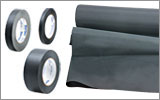
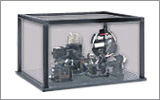
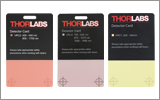
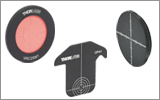
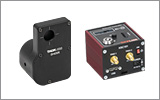
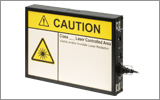
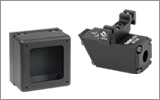
 Handheld Laser Source
Handheld Laser Source